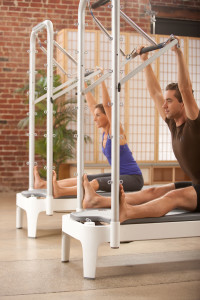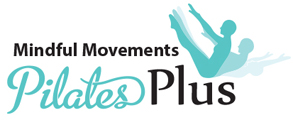 What exactly is Pilates?
What exactly is Pilates?What is the difference between mat and equipment work?
How often do I need to do Pilates to see results?
When will I notice results?
I’m new to Pilates – what is the best way to start?
What should I wear to my sessions?
Can I drop in for a class or do I need to make an appointment?
What are the benefits of Pilates?
What exactly is Pilates?
Pilates is a system of movements that engage the mind and condition the total body. The movements are designed to improve core physical strength, muscular endurance, flexibility, coordination, balance and posture as well as enhance mental awareness.
A Pilates workout will provide a balanced blend of strength and flexibility training that ensures no muscle group is overworked and the body works as an efficient, holistic system. Pilates focuses on the quality of movements rather than quantity, which makes one feel invigorated rather than exhausted after a session.
What is the difference between mat and equipment work?
Both mat and equipment work incorporate the elements of breathing, centering, concentration, control and precision. These fundamental elements are combined in a flowing class enabling you to stretch and strengthen your body’s deep core muscles.
In mat work, your main resistance is the weight of your own body and supporting that weight while performing a wide variety of movements. The equipment challenges yet supports the body through the movements.
When working with equipment you will work against the weight of springs for resistance and stability. The equipment is beneficial for everyone, but especially for those that need the extra support due to physical limitations, lack of flexibility, balance, and chronic pain. The equipment also allows the body to experience deep stretching and opening movements that we just cannot experience with mat based work.
Initially, many people find that mat work is much more challenging, while the support the equipment offers allows them to focus on correct movement patterns while gaining the core strength to do the mat work.
It is recommended that both types of workouts be used for maximum results.
How often do I need to do Pilates to see results?
I recommend Pilates be practiced 3 – 4 times per week in order to see results. For best results, you should combine your studio workouts with mat based workouts.
When will I notice results?
A famous quote by Joseph Pilates states: “In 10 classes you will feel the difference, In 20 classes you will see the difference, and in 30 classes you will have a whole new body.”
In my experience, it takes about 6 sessions/classes before clients share with me that they have become aware of their posture issues and/or correct muscle movement patterns as they function outside of the studio.
I’m new to Pilates – what is the best way to start?
The studio requires every new client to take a few private sessions before taking a Group or Duet class. These private sessions allow me understand your postural and muscular patterns while you are learning how to use the Pilates equipment. At the end of these first few private sessions, you will have a very good understanding of the Pilates fundamentals and receive a customized workout plan for you to utilize at home.
What should I wear to my sessions?
Pilates is performed using Pilates/Yoga socks. Clients should wear comfortable clothing that isn’t too baggy. This allows the instructor to see your alignment and better correct your form.
Can I drop in for a class or do I need to make an appointment?
Studio policy indicates that pre-registration is required for all classes and sessions.
What are the benefits of Pilates?
With regular committed Pilates workouts you can expect to improve the way your body looks and feels. Pilates will:
- Engage the mind and enhance body awareness
- Develop functional fitness for daily life activities
- Improve strength, flexibility, balance, circulation and stamina
- Tone and build long, lean muscles without bulk
- Challenge deep abdominal muscles to support the core
- Restore postural alignment and heighten neuromuscular coordination
- Reduce stress, relieve tension and boost energy through deep stretching
- Correct over-training of muscle groups, which can lead to stress and injury
